More to Love: 7 Must-See Spots in Himeji Castle

Himeji Castle is possibly Japan's most famous castle. Here we introduce some of the reasons why this is one of Japan's most beloved national treasures.
Japan's castles and castle ruins are among the most popular sightseeing locations for overseas visitors. In this article, we will introduce 7 spots you should check out when visiting Japan's pride - the national treasure and World Heritage Site, Himeji Castle.
*Depending on the type and scale of the castle, you might not come across all the facilities introduced here in other castles than Himeji.
Read also:Over 400 Years of History: Himeji Castle, the Pride of Japan
1. Ishigaki - The Stone Walls
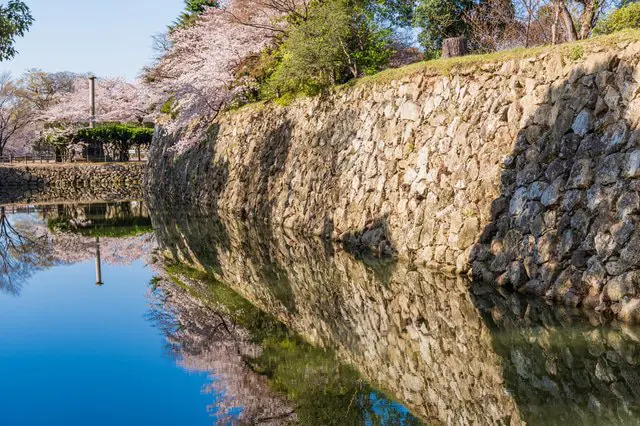
This ishigaki, or stone wall, forms the base of the castle and has several tricks in order to ward off any possible intruders.
As the corners of the walls break off easily, Himeji castle was built using the sangizumi technique, which has the long rectangular stones layers alternating with shorter stone pieces.
In order to keep intruders out, the upper part of the stone wall suddenly takes a steep turn. This construction technique is called a "fan gradient".
2. Hori - The Moat
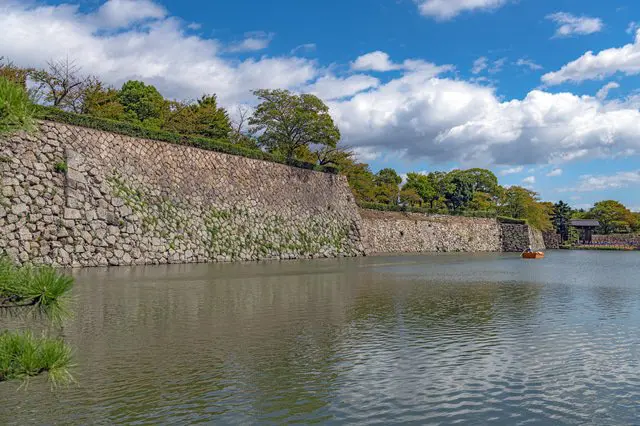
This is the hori, or moat, which is built around the castle to prevent intruders from getting inside. There are 3 moats surrounding Himeji Castle - an outer one, one in the middle and an inner moat. The moat pictured above is the inner one. As you see the reflection of the beautiful castle in the river, you almost forget that this moat was built to keep out enemy intruders.
By the way, moats which don't have water are called karabori.
3. Musha-damari - Gathering Spots for the Warriors
Musha - the warriors - would gather in the musha-damari, in order to make themselves difficult to see from peering eyes. This area is surrounded by earthen walls on three sides, and is where the samurai would wait before heading towards the area to the west of the citadel.
4. Hazama
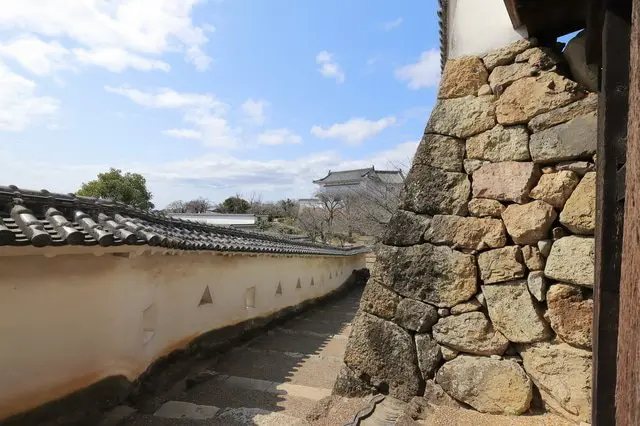
The small narrow openings along Himeji Castle's tower and earthen walls are called hazama. These were implemented so that those inside the castle can safely shoot arrows or bullets through these holes at the enemy camp.
Hazama come in various shapes, such as round and square.
The reason why the inside part is larger than the part on the outside is to make it difficult for the enemy to attack, but gave the person on the inside a wide field range.
5. Passageways with Gates and Mazes
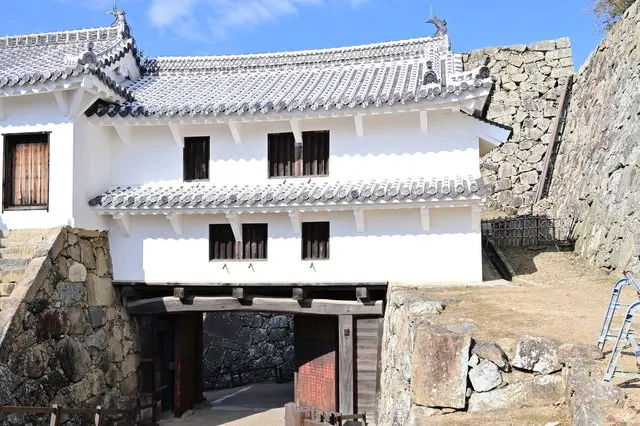
In order to keep intruders from getting into the main part of the castle, Japanese castles feature long winding passageways and many, many gates.
Himeji Castle is not an exception. From the castle entrance to the very last fortress there is a multitude of gates of all sizes that all weave together to form a maze which would keep any intruder from reaching the main castle. There are currently 21 gates in use. The above picture shows the Nuno Gate, which features a tower and is one of the large scale gates.
The picture above shows the passage connecting the Mizuno Gate to the Hono Gate, which is fairly close to the castle tower. The height and width of this entrance are just large enough for 2 people to pass through at the same time. The wall in the middle is called an abura kabe (wall that hasn't been painted white), and is considered to be a very sturdy wall.
6. Seki Otoshi
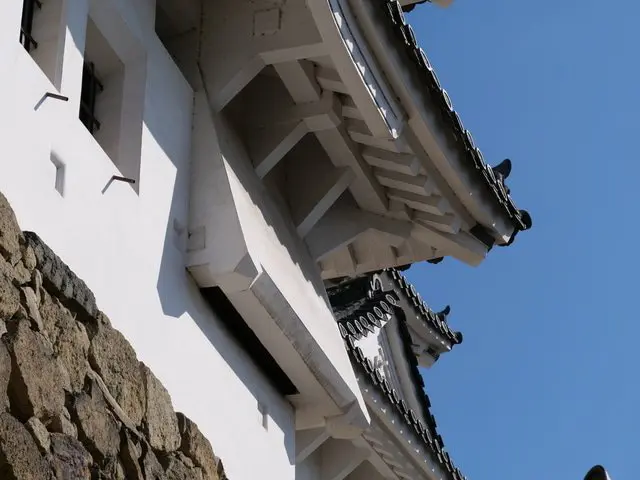
Even if enemies have managed to make their way all the way up to the inner castle tower, there is one more trick that this castle has got up its sleeves. You probably noticed the thin openings sticking out the side of the castle tower. They are called seki otoshi ("stone dropping holes"). Even if intruders manage to make their way right up the castle tower, defenders from the inside can drop stones on them from here.
Let's take an even closer look at the castle walls. These holes were not just for dropping stones, they were also used for keeping watch, as well as for shooting at the targets below.
If you take a look at the stone dropping holes from inside the castle, you can see that the holes were covered by long wooden planks. The thick, white grill in front of the stone dropping area is there to prevent arrows from the enemy camp reaching the people on duty here.
7. Defense Mechanisms Inside the Building
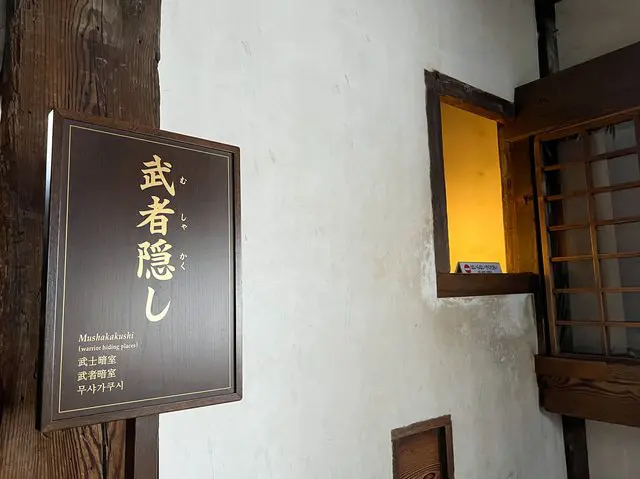
In the end, let's take a look at the defense equipment inside the castle tower. Here is a room called musha kakushi, or "a warrior's hiding-place". It is designed to help the warriors hide themselves, while retaining the ability to attack the enemy intruders in case they made it all the way into the castle.
Inside the castle tower walls, there is a weapon rack which was used to store spears and guns. It seems that the castle tower was used to keep the weapons as well.
Here we have introduced the various defense mechanisms from outside the castle and from inside the castle tower. There are many more tricks that this castle has in store for visitors. If you have the chance, go visit the castle and see them for yourself!
Information
Himeji Castle
Address: Hyogo, Himeji, Honchō 68
Hours:09:00 - 16:00 (closes at 17:00),Summer Time (April 27th-August 31st) 9:00-17:00 (Closes at 18:00)
Closed:December 29th, 30th
Wi-Fi: Yes (
Other Languages: website is in English, Chinese, Korean, French, Spanish, Portuguese, German, and Vietnamese
Nearest Station: 20-minute walk from JR Himeji Station, or San'yo Himeji Station
Price: 300-1000 yen
Phone: 079-285-1146
Website: Himeji Castle
Photos by Pixta
日本文化、特に絵画や工芸品が好き。福岡、京都、大阪、ベルギー、アメリカを経て現在は神戸在住。座右の銘は「住めば都」。





































![[2026] Top 5 Strawberry Picking Spots in Tokushima, Naruto| Farms and Access Guide for January to May](https://resources.matcha-jp.com/resize/720x2000/2025/03/06-227165.webp)

